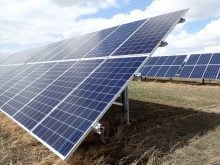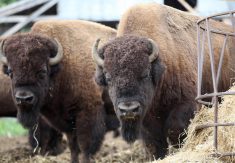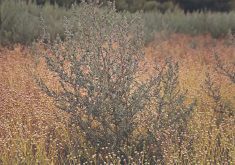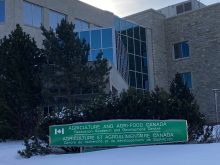Stretching from Lloydminster to the Montana border and from the Rocky Mountain foothills to Saskatchewan, Alberta’s coalbed methane reserves lie squarely atop the province’s fertile farmlands.
Coalbed methane, or CBM, is natural gas trapped in underground coal seams. Recognized in the late 1990s as a “huge, untapped energy source” and now dubbed the new clean fuel of the future, natural gas from coalbed methane and other non-conventional sources is expected to account for 80 percent of all new drilling and half of all gas production by 2025.
It’s clean as long as you don’t consider its impact on area farmers, that is.
Read Also

High prices see cow-calf producers rushing to incorporate
Farm accountants are reporting a steady stream of cow-calf producers rushing to get their operations incorporated ahead of selling their calves this fall.
To date, water pollution concerns have attracted the lion’s share of public controversy surrounding coalbed methane. By pumping out ground water that holds the gas under pressure, previously inaccessible supplies of methane can be tapped. Often brackish and highly saline, this water can pose a threat to surface and ground water reserves upon which local farmers and their communities depend.
But sleeping in the wings is another issue of more concern to farmers and that is wellhead density. Because CBM wells are less productive, spacings as high as one well every 80 acres were originally cited for coalbed methane extraction compared to one every 640 acres for conventional natural gas. Areas of Alberta already have proposals for five wells on 160 acres and requests for up to 32 wells per section. The National Energy Board estimates 50,000 wells will be needed for Alberta’s Horseshoe Canyon bed alone.
If the economics of coalbed methane extraction pan out, the kids could soon be calling the landman “uncle.”
Initially, this might seem like a good thing. The economics of farming being what they are, revenues from oil and gas can help pay the bills.
But farming around the infrastructure of the oil and gas industry is costly and when the landman responsible for negotiating terms of access works for an oil and gas company that holds undeniable access rights, farmers are in a squeeze. That embrace will only get tighter.
With higher energy costs, landmen are under pressure by their employers to cut quick deals. At September’s conference of the Canadian Association of Petroleum Landmen, “creation of shareholder value” was defined as the critical performance challenge and the entire 11/2 day program was devoted to reinforcing the role landmen play in “executing their company’s strategy to attract the capital necessary to continue to grow the business.”
According to Albertan Norma LaFonte, it’s all about transparency and respect – something farmers need from the process and until now haven’t gotten. Describing herself as “just an acreage person surrounded by excellent farmers,” LaFonte saw the writing on the wall several years ago and decided to try to level the playing field.
Not understanding much about the oil and gas industry, she started there. In a process that appears to have garnered respect from all quarters, the Wheatland Surface Rights Action Group spent the next 18 months bringing in speakers in “from everywhere” to help farmers understand the myriad of regulations and practices in the oil and gas industry and how they affect agriculture.
With this information in their pockets, the Wheatland farmers turned their minds to how they might negotiate a better deal.
One problem was clearly the landman system. Under provincial regulations, anyone negotiating surface rights must be a licensed land agent. Since all licensed land agents worked for oil and gas companies, this left the interests of farmers unrepresented. Why not a landman for the farmer? Agriculture needed a licensed professional negotiator who understands farming, knows the impact of oil and gas development on farmland and can sit and negotiate toe to toe with the oil and gas companies for a better deal.
LaFonte asked the question. Nope, said the authorities. To be licensed you must have apprenticed with the oil and gas industry and negotiated 25 contracts on their behalf. That means working for industry. LaFonte was publicly assured by an oil and gas representative that this was likely to happen about the same time the devil donned ice skates.
But as LaFonte pointed out to the licensing body, the regulations don’t specify on whose behalf the land agent must work. There is nothing to stipulate that a licensed land agent cannot represent the interests of farmers in their negotiation with the oil and gas industry.
And as LaFonte had done her homework, the licensing body could only agree. Apprenticing under what she describes as a forward thinking land agent, LaFonte will this fall present to the licensing body her completed apprenticeship papers documenting the 25 contracts she has negotiated on behalf of farmers. She will soon be Alberta’s first land agent and farmer advocate who did not have to work for industry to get her papers.
From the actions of one woman and a small group of Wheatland county farmers, a more open and accountable land agent negotiation process is emerging that better recognizes the priorities and needs of farmers.
There is a LaFonte in every farm community just waiting for a locally based, farmer-led surface rights action group to bring her forward.














